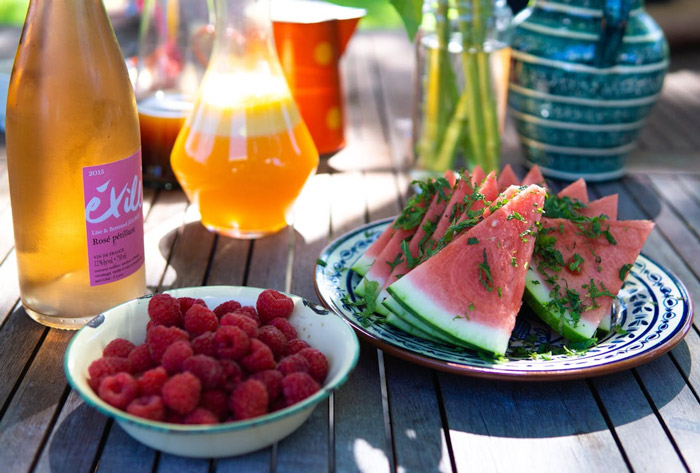In the world of wine, sweet wines are often labeled as “cheap” or “low-quality.” Many consumers believe that only dry wines symbolize high quality, while sweet wines are seen as products where winemakers add sugar to mask the flaws of inferior grapes.
In reality, the craftsmanship behind sweet wines is incredibly complex. Many top-tier sweet wines are even more challenging to produce—and more expensive—than dry wines. From Germany’s late-harvest Riesling to France’s Sauternes noble rot wines, the allure of sweet wines far exceeds what many imagine.
Where Does the Sweetness in Sweet Wines Come From?
Many mistakenly assume that the sweetness in sweet wines comes from “added sugar.” However, in high-quality sweet wines, the sugar mostly originates from natural processes, backed by several exquisite winemaking techniques:
– Fermentation Interruption: In the production of Portugal’s Port and Spain’s Sherry, winemakers add spirits (like brandy) during fermentation to halt the process, preserving the grapes’ natural sugars. This results in a wine with a rich body and a perfectly balanced hint of sweetness.
– Noble Rot (Botrytis cinerea): Premium sweet wines like France’s Sauternes and Hungary’s Tokaji rely on noble rot to dehydrate and concentrate the grapes, intensifying their sugars and imparting a honeyed sweetness.
– Late Harvest & Ice Wine Techniques: Regions like Germany and Canada allow grapes to naturally dry on the vine or freeze before harvest, concentrating their sugars to produce sweet yet high-acidity wines. These methods test both the winemaker’s skill and patience, as well as requiring ideal climatic conditions, making each bottle of late-harvest or ice wine exceptionally precious.
The Key to Quality Sweet Wines: Balance is Everything
Many hold the misconception that “sweet equals low quality.” In truth, the core standard for judging a sweet wine lies in its balance. When selecting a sweet wine, consider the following:
– Sufficient Acidity: Acidity balances the sweetness, keeping the wine refreshing and preventing cloyingness.
– Complex Aromas: Beyond fruity notes, high-quality sweet wines often feature layered flavors like honey, almond, and spices.
– Long Finish: The sweetness shouldn’t just linger briefly on the palate but should harmonize with other flavors. If a sweet wine lacks acidity or structure, it’s likely of poor quality.
Four Recommended High-Quality Sweet Wines
1. La Spinetta Moscato d’Asti Bricco Quaglia
This lightly sweet sparkling wine from Italy’s Piedmont region is made from 100% Moscato grapes, renowned for its fresh, fruity profile.
– Flavor Profile:
– Aroma: Tropical fruits (peach, green apple), citrus (lemon, grapefruit), honeysuckle, and sweet spices.
– Palate: Delicate bubbles with a perfect balance of sweetness and bright acidity, finishing with subtle caramel notes.
– Winemaking: Fermented in stainless steel at 15°C for one month to preserve natural fruitiness, sourced from the single-vineyard Bricco Quaglia (40-year-old vines).
2. Château Coutet Barsac 1er Cru 2018
A premier cru-classé sweet wine from Bordeaux’s Barsac region, celebrated for its elegance and complexity.
– Flavor Profile:
– Aroma: Tropical fruits (pineapple, guava), citrus zest, gingerbread, orange blossom, and honeyed vanilla.
– Palate: Luscious yet vibrant, with a long mineral-driven finish.
– Winemaking: Hand-harvested botrytized grapes (75% Sémillon, 23% Sauvignon Blanc, 2% Muscadelle), aged 18 months in oak (partial new barrels).
3. Mission Hill Reserve Riesling Icewine 2016
A Canadian icewine from Okanagan Valley, showcasing Riesling’s signature balance of sweetness and acidity.
– Flavor Profile:
– Aroma: Vanilla, citrus (lemon, orange peel), ripe pear, and pineapple.
– Palate: Sweet tropical fruits (apricot, peach) balanced by crisp acidity, leading to a lingering finish.
4. Graham’s Blend No.12 Ruby Port
A modern ruby Port from Portugal’s Graham’s, offering a lighter, fruit-forward style.
– Flavor Profile:
– Aroma: Red berries (raspberry, strawberry), herbs, and peppery spice.
– Palate: Sweet yet fresh, with a light body and a spicy, citrusy finish.
– Winemaking: Midnight-harvested Touriga Nacional, fortified with 77% ABV brandy to retain fruitiness (19% ABV).
Conclusion
Sweet wines, once misunderstood gems, are now shining in their rightful glory. Let’s break the stereotypes and appreciate them with fresh perspectives—discovering their unique charm and premium quality.

